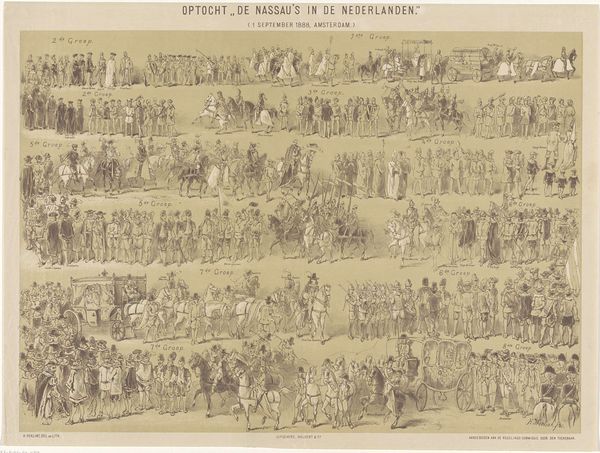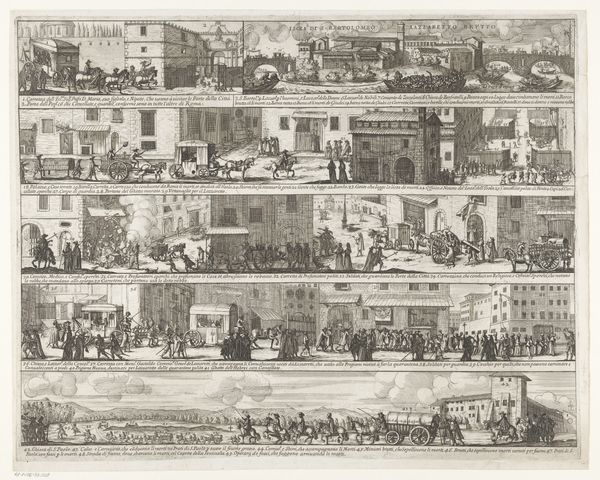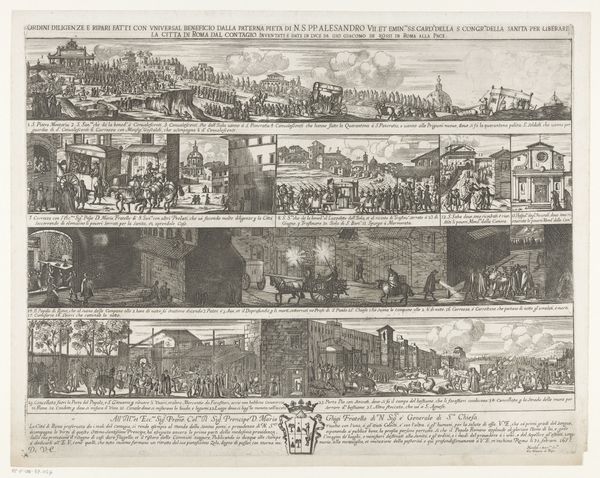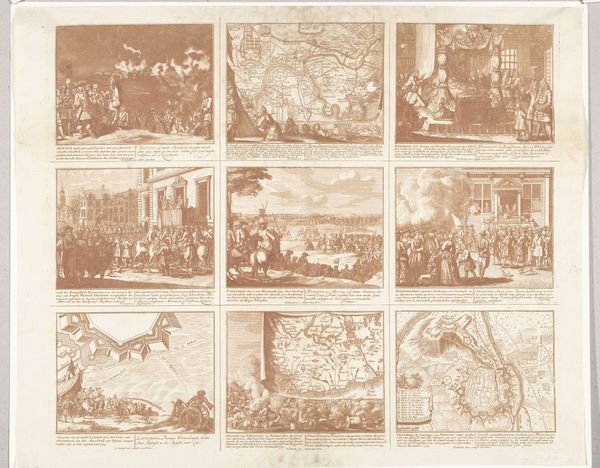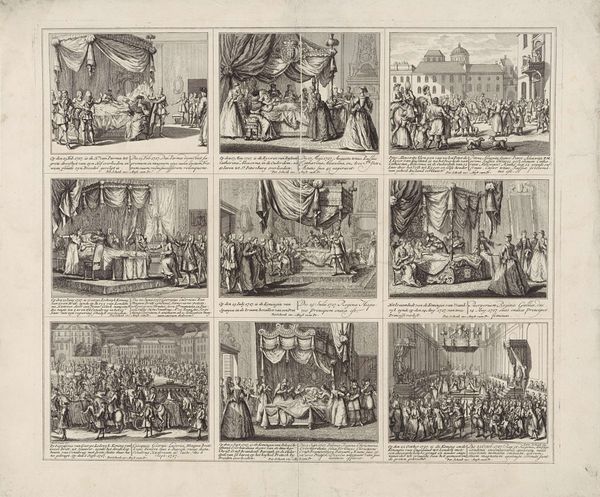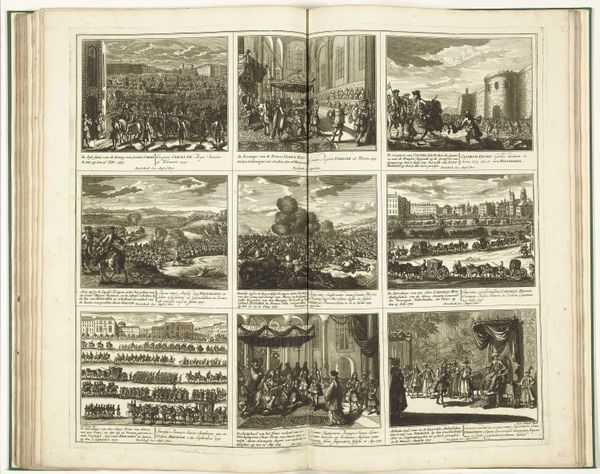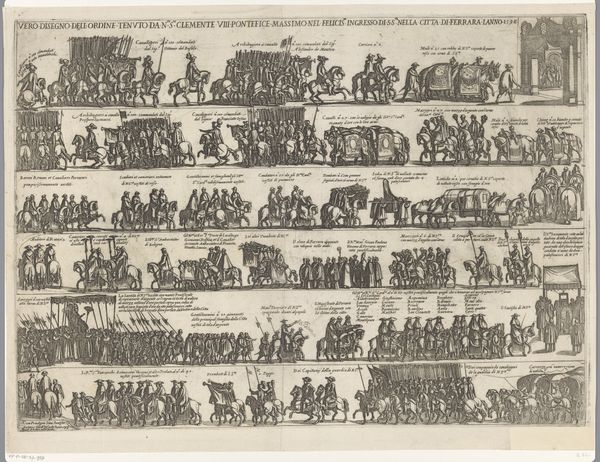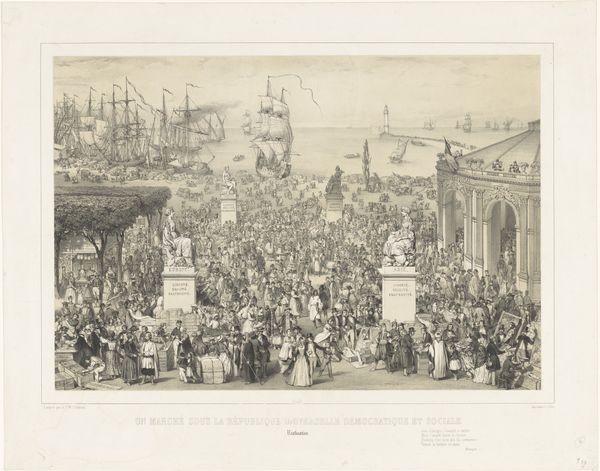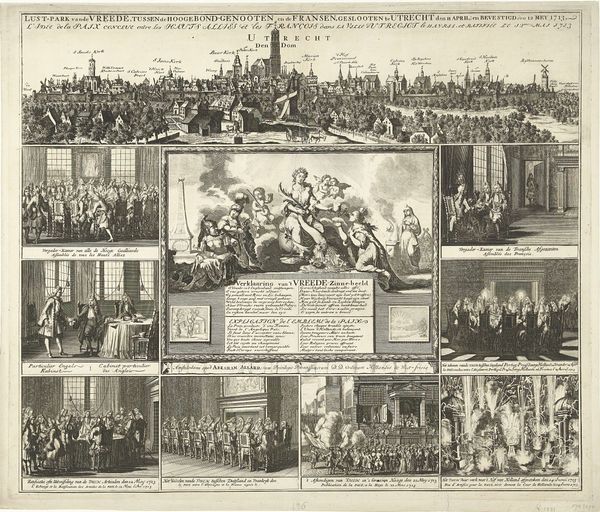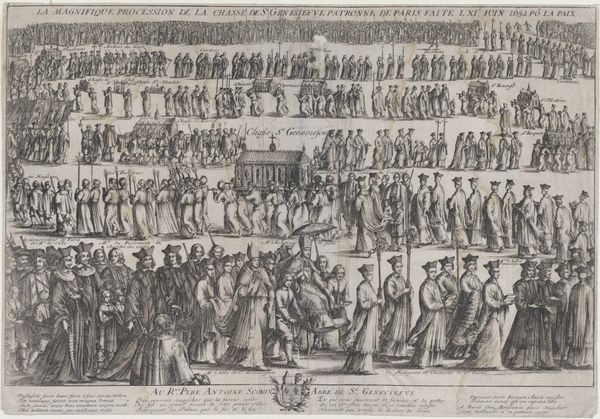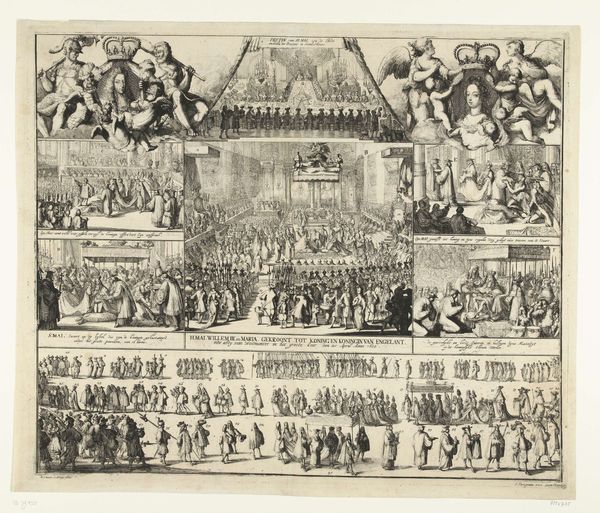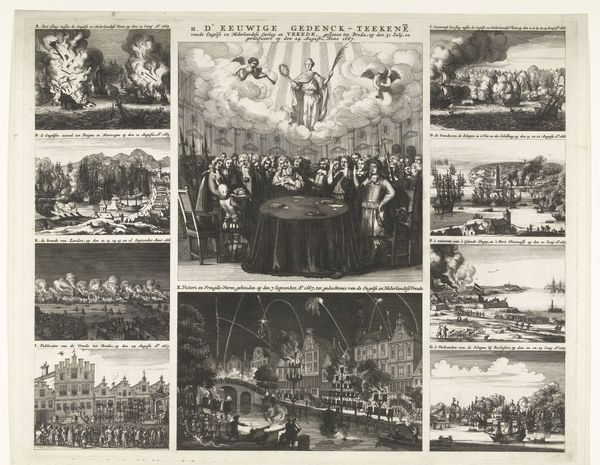
drawing, print
#
drawing
#
baroque
# print
#
cityscape
#
history-painting
Dimensions: sheet: 16 5/16 x 20 3/16 in. (41.5 x 51.2 cm)
Copyright: Public Domain
Curator: This intricate print is titled "Peace Conference at Breda" by Romeyn de Hooghe, created between 1660 and 1708. It’s currently housed here at the Metropolitan Museum of Art. What's your initial reaction? Editor: My first thought is just how densely packed it is with detail! All those figures, the cityscape… It almost feels overwhelming, a visual record trying to contain so much information within a single frame. Curator: Indeed. De Hooghe was quite interested in portraying not just the central event – the signing of the peace treaty – but the atmosphere and celebratory aspects that followed. Editor: Which, as we know, were politically charged celebrations, intended to solidify the Dutch Republic's status after prolonged conflicts. How interesting that prints, essentially reproducible images, were used to shape public perception. It brings the politics of imagery to the forefront. What exactly *is* the medium being used to say, here? Curator: Well, we’re seeing etching here, used in a sophisticated way to render gradations of tone with amazing subtlety. These weren't mass produced like cheaper woodcuts of the time might have been; this was meant to convey a sense of elevated craftsmanship appropriate for the occasion. This work required time and effort from a master craftsman. It really is worth taking a closer look at how different visual narratives are assembled from the etcher’s labor and deployed toward historical meaning. Editor: And that placement – where these were displayed in public spaces or disseminated privately. Were they strategically used? How did accessibility factor into the intent of image? Curator: Good point, accessibility was essential to communicate what was, at the time, considered key moments of Statecraft. We need to consider how institutions create legitimacy, by the physical printing process as much as what's depicted. Editor: Exactly, we have to acknowledge how visual representation intertwines so completely with power, state, and socio-political impact to be felt widely! This is so well demonstrated. Curator: Absolutely. It gives us a new appreciation of this piece that reveals how it sought to function as more than simply a work of art. Editor: A deeper perspective, reminding us to always question art’s wider engagement in the theater of state, I feel I understood far more after considering the medium’s impact.
Comments
No comments
Be the first to comment and join the conversation on the ultimate creative platform.
